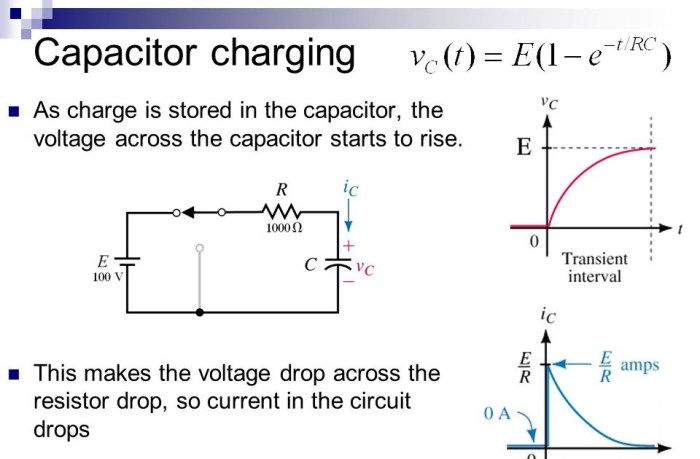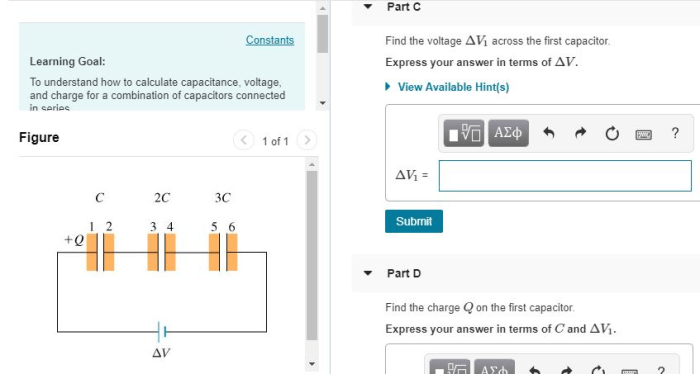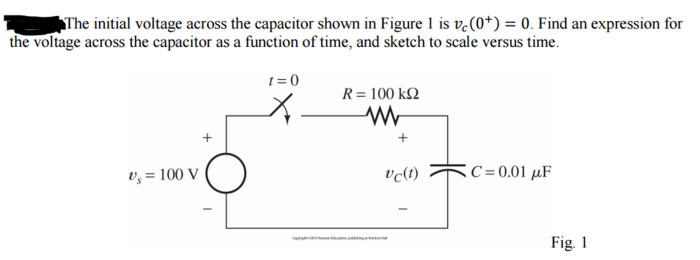Find the voltage δv1 across the first capacitor – Embark on an illuminating journey into the realm of capacitors, where we delve into the intricacies of finding the voltage δv1 across the first capacitor. This comprehensive guide unravels the fundamental concepts, practical applications, and analytical techniques surrounding this crucial aspect of circuit analysis, empowering you with a profound understanding of capacitor behavior.
Delving into the heart of the matter, we explore the factors influencing the voltage across a capacitor, providing a robust equation for precise calculations. Circuit analysis methods, such as mesh and nodal analysis, are meticulously examined, highlighting their significance in determining δv1.
Voltage across the first capacitor (δv1)

The voltage across a capacitor is the difference in electrical potential between its two terminals. It is measured in volts (V). The voltage across a capacitor is determined by the amount of charge stored on the capacitor and the capacitance of the capacitor.
The relationship between voltage, charge, and capacitance is given by the equation:
δv1 = Q / C
where:
- δv1 is the voltage across the capacitor (V)
- Q is the charge stored on the capacitor (C)
- C is the capacitance of the capacitor (F)
Circuit analysis methods, Find the voltage δv1 across the first capacitor
There are a number of different methods that can be used to analyze circuits, including:
- Mesh analysis
- Nodal analysis
- Superposition theorem
- Thevenin’s theorem
These methods can be used to find the voltage across a capacitor in a circuit by applying the appropriate equations and solving for the unknown voltage.
Practical applications
Capacitors are used in a wide variety of applications, including:
- Energy storage systems
- Filtering circuits
- Timing circuits
In each of these applications, it is important to know the voltage across the capacitor in order to ensure that the circuit is functioning properly. For example, in an energy storage system, the voltage across the capacitor determines the amount of energy that is stored.
In a filtering circuit, the voltage across the capacitor determines the cutoff frequency of the filter. And in a timing circuit, the voltage across the capacitor determines the time delay of the circuit.
Simulation and measurement techniques
There are a number of different simulation and measurement techniques that can be used to find the voltage across a capacitor. These techniques include:
- Spice simulation
- Oscilloscope measurement
Spice simulation is a computer-aided design (CAD) tool that can be used to simulate the behavior of a circuit. Spice simulation can be used to find the voltage across a capacitor in a circuit by entering the circuit schematic and the values of the circuit components.
Oscilloscope measurement is a technique that can be used to measure the voltage across a capacitor in a circuit by using an oscilloscope. An oscilloscope is an electronic instrument that can be used to display the voltage across a component over time.
Top FAQs: Find The Voltage δv1 Across The First Capacitor
What is the significance of finding the voltage δv1 across the first capacitor?
δv1 represents the voltage drop across the first capacitor in a circuit, providing crucial information for circuit analysis and design. It influences the behavior of subsequent circuit elements and plays a vital role in determining circuit performance.
How does the capacitance value affect the voltage δv1?
Capacitance is inversely proportional to δv1. A higher capacitance value results in a lower voltage drop across the capacitor, while a lower capacitance value leads to a higher voltage drop.
What practical applications rely on finding the voltage δv1 across the first capacitor?
δv1 is essential in designing and analyzing circuits used in energy storage systems, filtering circuits, and timing circuits. Understanding δv1 enables engineers to optimize circuit performance and ensure reliable operation.

